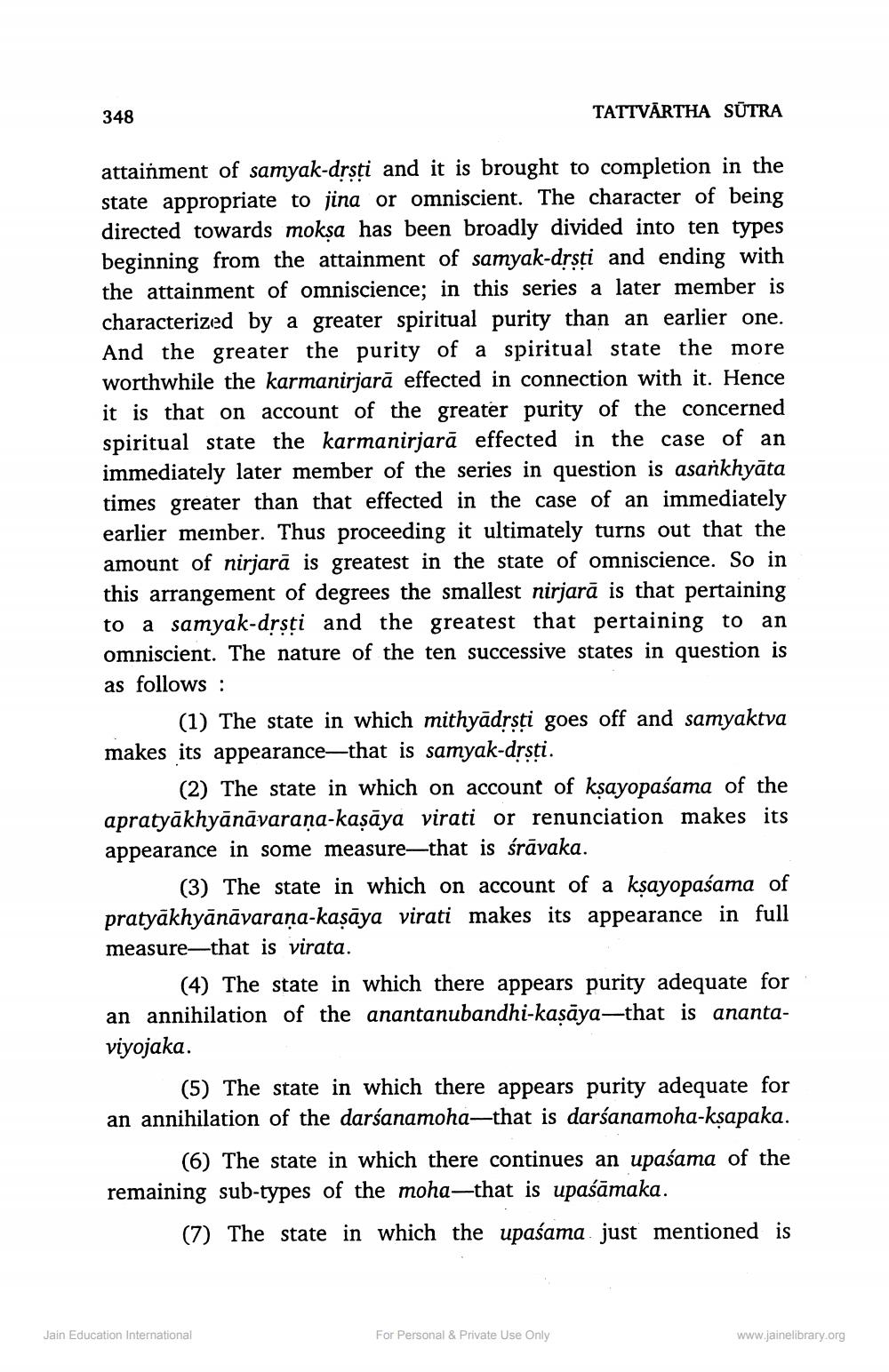________________
348
TATTVĀRTHA SŪTRA
attainment of samyak-drsti and it is brought to completion in the state appropriate to jina or omniscient. The character of being directed towards moksa has been broadly divided into ten types beginning from the attainment of samyak-drsti and ending with the attainment of omniscience; in this series a later member is characterized by a greater spiritual purity than an earlier one. And the greater the purity of a spiritual state the more worthwhile the karmanirjarā effected in connection with it. Hence it is that on account of the greater purity of the concerned spiritual state the karmanirjarā effected in the case of an immediately later member of the series in question is asankhyāta times greater than that effected in the case of an immediately earlier member. Thus proceeding it ultimately turns out that the amount of nirjarā is greatest in the state of omniscience. So in this arrangement of degrees the smallest nirjarā is that pertaining to a samyak-drsti and the greatest that pertaining to an omniscient. The nature of the ten successive states in question is as follows:
(1) The state in which mithyādrsţi goes off and samyaktva makes its appearance—that is samyak-drsţi.
(2) The state in which on account of kşayopaśama of the apratyākhyānāvaraṇa-kasāya virati or renunciation makes its appearance in some measure—that is śrāvaka.
(3) The state in which on account of a kşayopaśama of pratyākhyānāvaraņa-kasāya virati makes its appearance in full measure—that is virata.
(4) The state in which there appears purity adequate for an annihilation of the anantanubandhi-kaṣāya—that is anantaviyojaka.
(5) The state in which there appears purity adequate for an annihilation of the darśanamoha—that is darśanamoha-ksapaka.
(6) The state in which there continues an upaśama of the remaining sub-types of the moha-that is upaśāmaka.
(7) The state in which the upaśama just mentioned is
Jain Education International
For Personal & Private Use Only
www.jainelibrary.org




